-
Product Name
Anti-Nox4 antibody
- Documents
-
Description
Rabbit polyclonal antibody to Nox4
-
Tested applications
WB, IHC-P, FC
-
Species reactivity
Human, Mouse, Rat, Dog, Cow, Horse
-
Alternative names
AI648021 antibody
-
Isotype
Rabbit IgG
-
Preparation
This antigen of this antibody was klh conjugated synthetic peptide derived from human nox-4 81-180/578
-
Clonality
Polyclonal
-
Formulation
Liquid, 0.01M TBS(pH7.4) with 1% BSA, 0.03% Proclin300 and 50% Glycerol.
-
Storage instructions
Store at -20℃ for one year. Avoid repeated freeze/thaw cycles. The lyophilized antibody is stable at room temperature for at least one month and for greater than a year when kept at -20℃. When reconstituted in sterile pH 7.4 0.01M PBS or diluent of antibody the antibody is stable for at least two weeks at 2-4℃.
-
Applications
WB:1:500-2000
IHC-P:1:400-800
FC:1μg/Test
-
Validations
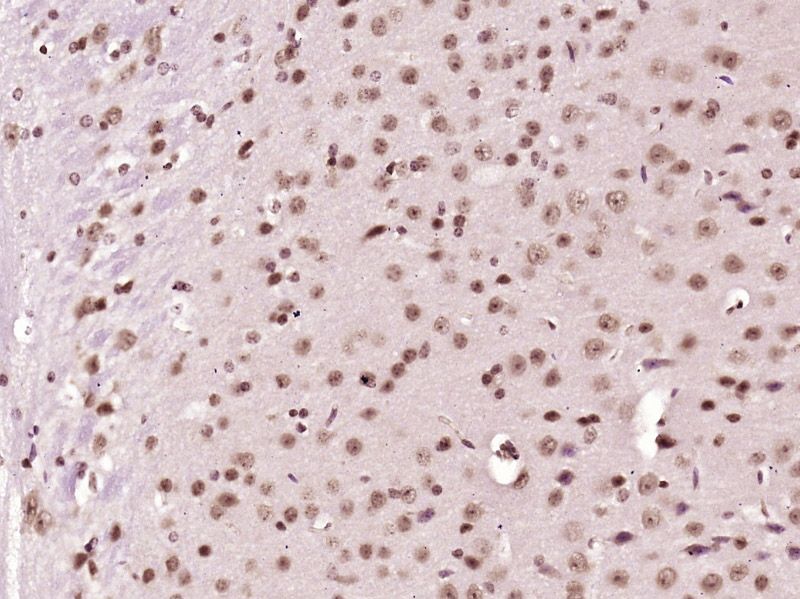
Fig1: Paraformaldehyde-fixed, paraffin embedded (Mouse brain); Antigen retrieval by boiling in sodium citrate buffer (pH6.0) for 15min; Block endogenous peroxidase by 3% hydrogen peroxide for 20 minutes; Blocking buffer (normal goat serum) at 37℃ for 30min; Antibody incubation with (NADPH oxidase 4) Polyclonal Antibody, Unconjugated at 1:400 overnight at 4℃, followed by operating according to SP Kit(Rabbit) (sp-0023) instructions and DAB staining.
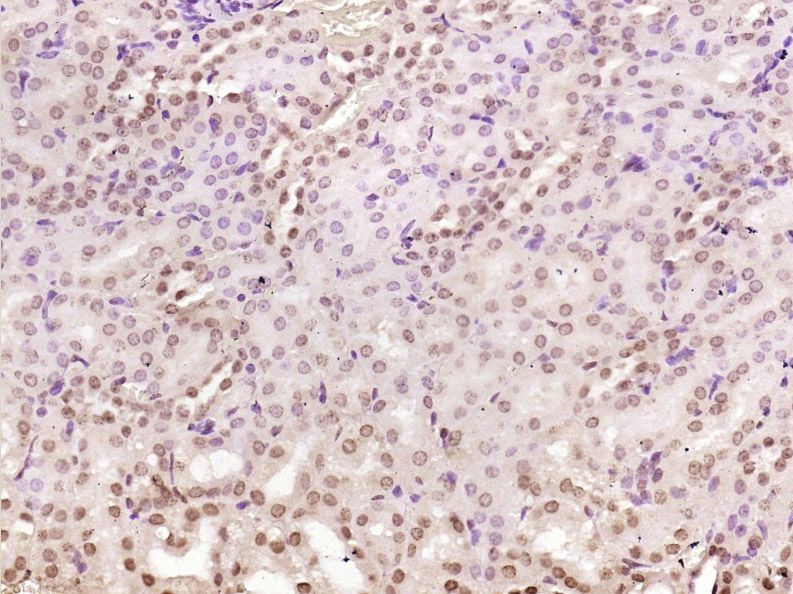
Fig2: Paraformaldehyde-fixed, paraffin embedded (Mouse kidney); Antigen retrieval by boiling in sodium citrate buffer (pH6.0) for 15min; Block endogenous peroxidase by 3% hydrogen peroxide for 20 minutes; Blocking buffer (normal goat serum) at 37℃ for 30min; Antibody incubation with (NADPH oxidase 4) Polyclonal Antibody, Unconjugated at 1:400 overnight at 4℃, followed by operating according to SP Kit(Rabbit) (sp-0023) instructions and DAB staining.
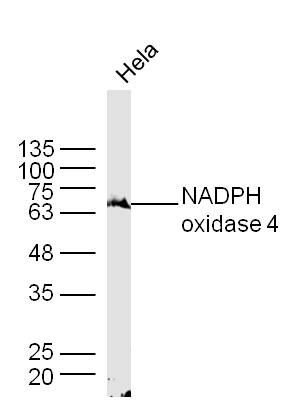
Fig3: Sample: Hela Cell Lysate at 40 ug; Primary: Anti- NADPH oxidase 4 at 1/300 dilution; Secondary: IRDye800CW Goat Anti-Rabbit IgG at 1/20000 dilution; Predicted band size: 64 kD; Observed band size: 64 kD
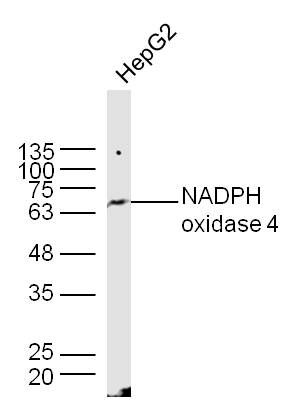
Fig4: Sample: HepG2 Cell Lysate at 40 ug; Primary: Anti- NADPH oxidase 4 at 1/300 dilution; Secondary: IRDye800CW Goat Anti-Rabbit IgG at 1/20000 dilution; Predicted band size: 64 kD; Observed band size: 64 kD
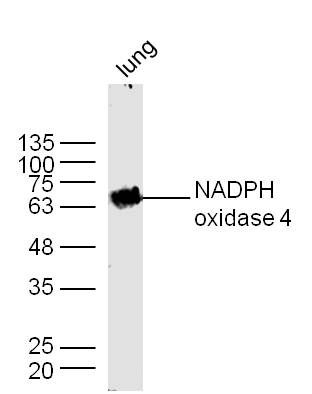
Fig5: Sample: Lung (Mouse) Lysate at 40 ug; Primary: Anti- NADPH oxidase4 at 1/300 dilution; Secondary: IRDye800CW Goat Anti-Rabbit IgG at 1/20000 dilution; Predicted band size: 64 kD; Observed band size: 64 kD
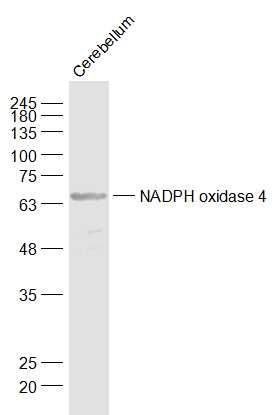
Fig6: Sample:; Cerebellum (Mouse) Lysate at 40 ug; Primary: Anti-NADPH oxidase 4 at 1/1000 dilution; Secondary: IRDye800CW Goat Anti-Rabbit IgG at 1/20000 dilution; Predicted band size: 64 kD; Observed band size: 64 kD
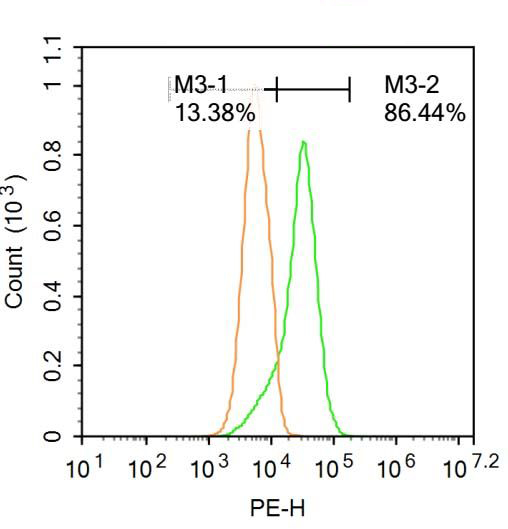
Fig7: Blank control: Raji.; Primary Antibody (green line): Rabbit Anti-NADPH oxidase 4 antibody ; Dilution: 1μg /10^6 cells;; Isotype Control Antibody (orange line): Rabbit IgG .; Secondary Antibody : Goat anti-rabbit IgG-PE; Dilutio
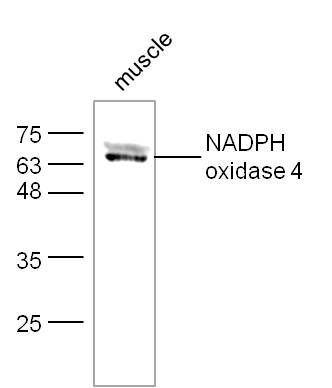
Fig8: Sample:; muscle (Mouse) Lysate at 40 ug; Primary: Anti-NADPH oxidase 4 at 1/300 dilution; Secondary: IRDye800CW Goat Anti-Rabbit IgG at 1/20000 dilution; Predicted band size: 64 kD; Observed band size: 64 kD
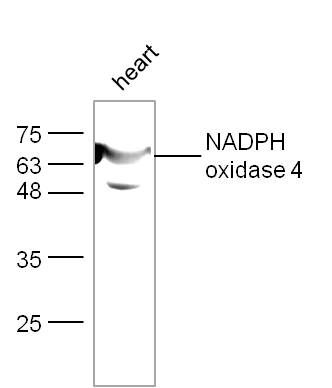
Fig9: Sample:; heart (Mouse) Lysate at 40 ug; Primary: Anti-NADPH oxidase 4 at 1/300 dilution; Secondary: IRDye800CW Goat Anti-Rabbit IgG at 1/20000 dilution; Predicted band size: 64 kD; Observed band size: 64 kD
- Background
Related Products / Services
Please note: All products are "FOR RESEARCH USE ONLY AND ARE NOT INTENDED FOR DIAGNOSTIC OR THERAPEUTIC USE"
